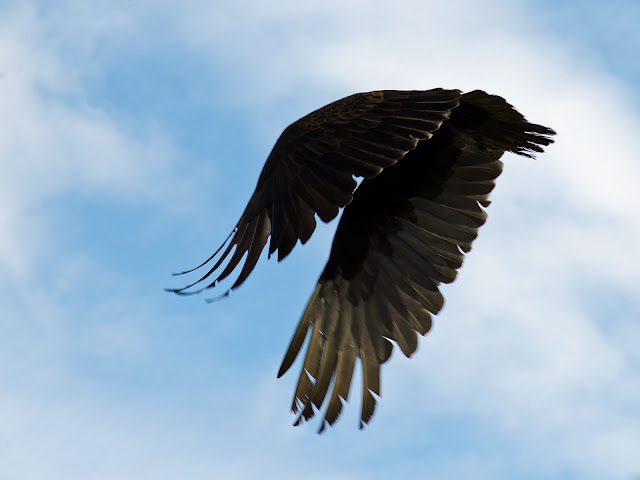 |
| Looking me over; was I going to steal their dinner? |
A half-dozen vultures were standing around something in the roadside weeds, while a few more stood guard in a tree and on the overhead wires. When I opened the car door, they all lifted off and moved to a more distant tree.
 |
| The underside of the flight feathers is paler than the rest of the bird. |
I went over to look at their meal. A young deer; roadkill, rotting, oozing, stinking. Somehow it was difficult to imagine anything eating that. But there they were, a dozen or so big birds, just waiting for me to go away so they could get back to it.
I got back in the car and drove on for 15 minutes, then turned back, hoping to catch the vultures back at the deer. But they were smarter than I; the whole flock was perched in a bare tree behind the roadside alders.
 |
| Seven turkey vultures here. The rest were below the tree line. |
Turkey Vultures eat carrion, which they find largely by their excellent sense of smell. ... They prefer freshly dead animals, but often have to wait for their meal to soften in order to pierce the skin. They are deft foragers, targeting the softest bits first ... Thankfully for them, vultures appear to have excellent immune systems, happily feasting on carcasses without contracting botulism, anthrax, cholera, or salmonella. (Cornell)
About the stink; driving back, with the window closed, I could smell the rotting carcass a couple of curves before I arrived. I wondered how far away the vultures were when they first sensed it.
All the birds I saw were adults; juveniles have a grey head, while the adults' heads are pink or red.

They do appear intolerant of human observers in my experience as well, maybe because they are aware of their long take-off time on the ground and vulnerability to predators.
ReplyDelete